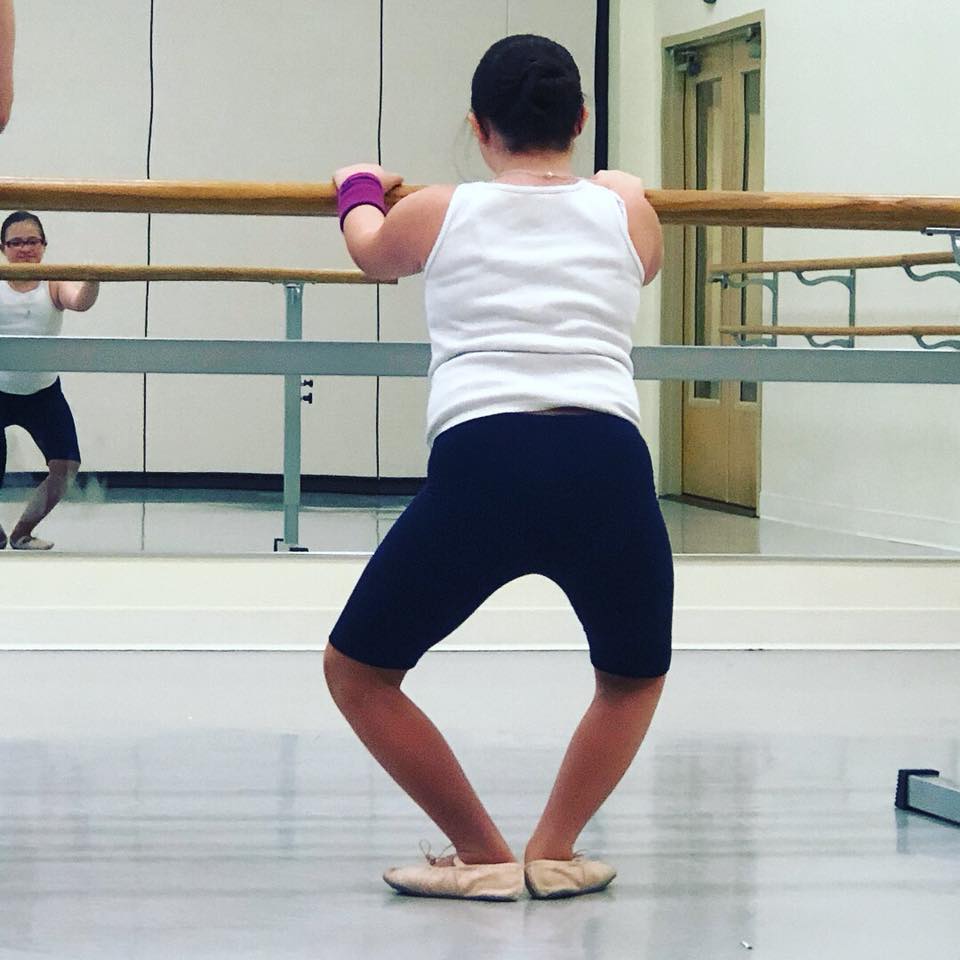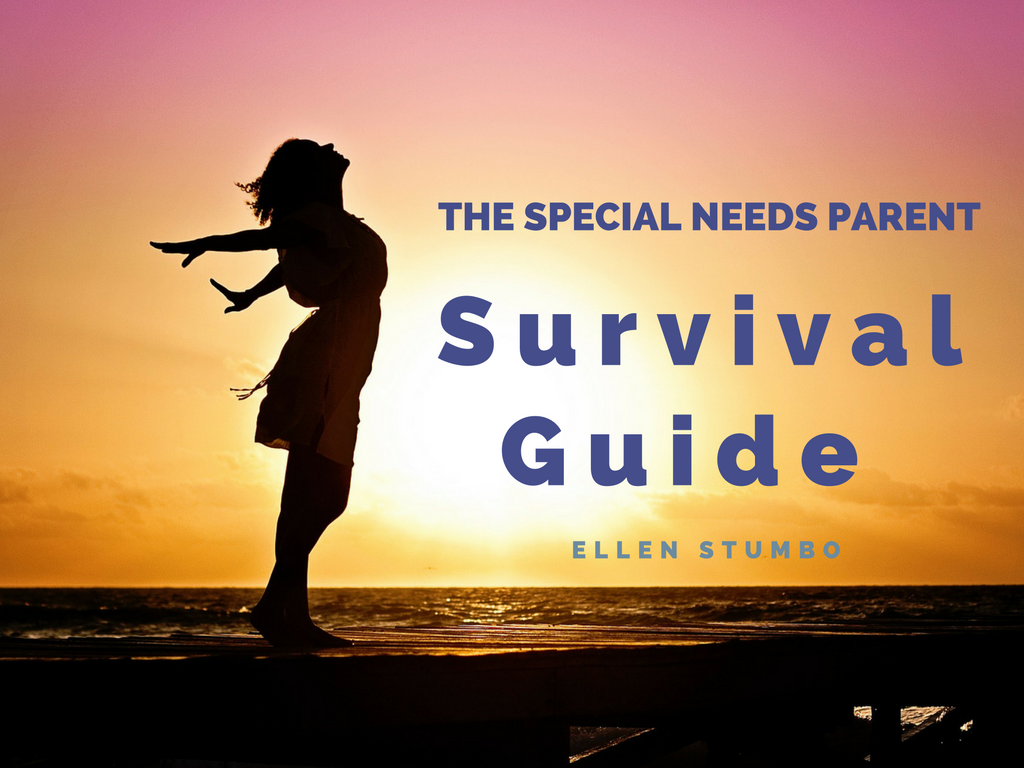Last year, I walked into a dance studio planning to sign up two of my girls; one for ballet, the other for ballet and tap. We found a studio only a few blocks from our house and it was not a competition dance school — we liked that.
We chose the studio because on their website they advertise a class for kids on the autism spectrum. They specify it is for “high functioning” kids. I didn’t like the terminology and their “condition,” but it lead me to believe they cared about kids with disabilities and had created a space for the kids who struggled in a regular class.
The day I planned to sign them up, the owners — a mother-daughter team — were both in the office. I filled out the paperwork and was excited to learn they offered a 50 percent discount for parents, so I signed up for Flamenco. When I mentioned my youngest had Down syndrome and I was unsure which would be the best placement for her, things changed. One of the owners said, “We have tried to work with kids like that, but it doesn’t go well.”
Kids like that. Her words hurt. Especially since she had never met my daughter. The ignorance of the comment based on assumptions and stereotypes cut deep.
“But you have never worked with my daughter,” I said, “you don’t know her.”
I even suggested we have a trial period where they could get to know her and see how she handled herself in the class. I had no reservations or doubt she would do just fine, but the owners were not willing to compromise. One of them suggested I look into adaptive dance, and even went as far as offering to send me some links (she did).
I stood there with my oldest daughter by my side. I had already handed our registration form and had even made our first payment and signed up for an automatic monthly payment option. I felt angry and hurt, there was a second when I almost asked for our forms back and stormed out of the place, making it known this was discrimination based on disability and their ignorance — but I didn’t. I was too angry. I did not want to make a scene. I wanted to think things through and decide how to best go about it once my emotions were not so raw.
In the end, I made the choice to stay with my oldest daughter and use it as an opportunity to try to educate the owners with kindness. I have wondered if it was a mistake.
A few times I tried to talk to the owner about once more offering an adaptive dance class (as it turns out, their website has not been updated and the class for kids on the autism spectrum has not been offered for years). I have a background in dance, and I even offered to get the training and teach the class. The turning point for me came when the owner said that sounded great, and I could pay a rental fee for the studio.
She simply had no desire to include kids with disabilities in her studio. It was fine to make money from a rental fee, but an inclusive dance school was not an option, she did not want kids like that to be representing her dance school.
After that conversation, I knew we were done.
Not only that, my oldest daughter did not have a positive experience.
I would have liked to stay. But after a year trying to make it work, it was time to walk away. Also, I cannot financially support a business that chose to close their doors on my daughter simply based on a diagnosis.
I will be sad to go. The Flamenco teacher and the ladies I danced with were a highlight in my week. I looked forward to seeing them, and they made me feel part of a group.
But this studio is unwilling to consider that my daughter is capable. They took away her individuality and full humanity without ever considering or witnessing her potential.
But just because a dance school closed its doors it does not mean my girl is done wanting to take ballet. I decide to look for a professional ballet school. I found one, and their mission statement clearly states, “we believe everyone can dance.”
I contacted the ballet school and we set up a 15 minute one-on-one class so a teacher could work with my daughter and get a sense of where she is at.

I went in thinking this class would determine whether they would accept her into their dance school or not based on our previous experience, but this one-on-one was simply to determine class placement, something they do with every single student who joins their dance school.
This is inclusion.
This is seeing potential.
This is the true power of dance.
I only wish my daughter, and other kids like her, did not have to go through so much heartache before they find the joy.
Special Needs Parents, Are You Surviving?
I created a guide with 13 practical ways to help you find peace in the midst of chaos, opt in to make sure you get a copy of this freebie!



Sadly, we can relate all too well. We have been turned away from swimming lessons and even a dentist’s office based on ignorance. I hope your daughter loves her ballet lessons.
I honestly am shocked this happened. I seen dance troupes with people in wheelchairs on Facebook. If they were no willing to even entertain the idea they should have edited their website as no to mislead families.
Yes, they do need to update their site. And I don’t think most dance studios know how to include kids with different disabilities, but there are a few who are willing.
Hi Ellen,
I’m so so sorry this happened. I have always been welcomed into programs like this so I don’t see why it would be so hard to include Nicole who seems very capable of being a dancer since she doesn’t seem to have a lot of physical/sensory or balance issues(like I do which makes it somewhat harder) from the way you describe her. It seems like for someone with Down Syndrome the main modification that would need to be made is how the dances are explained? Is that right? I have seen dancers with Down Syndrome once before and they actually seem more flexible in certain ways compared to able bodied dancers. I also hate that the dance school who rejected Nicole did not make clear the Autism class had ended. That’s really bad business management! It pisses me off! If there’s an accommodation I can’t yet provide when I work with disabled people in my creative projects I let people know flat out where the limits of my resources are and we either find a compromise or I provide them a better resource in another location. My guess would be that they never thought very highly of disabled kids to begin with and then maybe some of the kids they worked with previously had bad behavior issues so they were turned off but that is no excuse since each child is different.
Here’s some links on disability and dance for you and the girls.
http://www.enterthefaun.com
https://www.aunomdeladanse.com (this one is in French so google translate it)
http://heidilatskydance.org/company/
Hi, great to hear about the second dance school. Here is a link to a great initiative being run in Australia to make pathways for inclusion in dance and other sports with resources for dance schools.
We experienced discrimination at a barbershop. It broke my heart and I was crushed. We now have a wonderful barber who is patient and kind. I agree, why do we have to go through that hurt before we find joy.
That’s horrible. $$ talks – and hopefully more people will not support businesses that discriminate against our kids. I hope you post this article in your local paper with the name of that company so other people in your area can also decide not to support a dance studio that has such discrimination policies. Having not been in this situation, I’m learning from yours and I will never sign any one of my family up with a studio that discriminates against any one of my family members.
This makes me want to start an inclusive dance studio, and I don’t even know how to dance a kind of dance. I just know I love to move, and so do my girls. So not cool. Why are people so afraid?
I feel that way too!